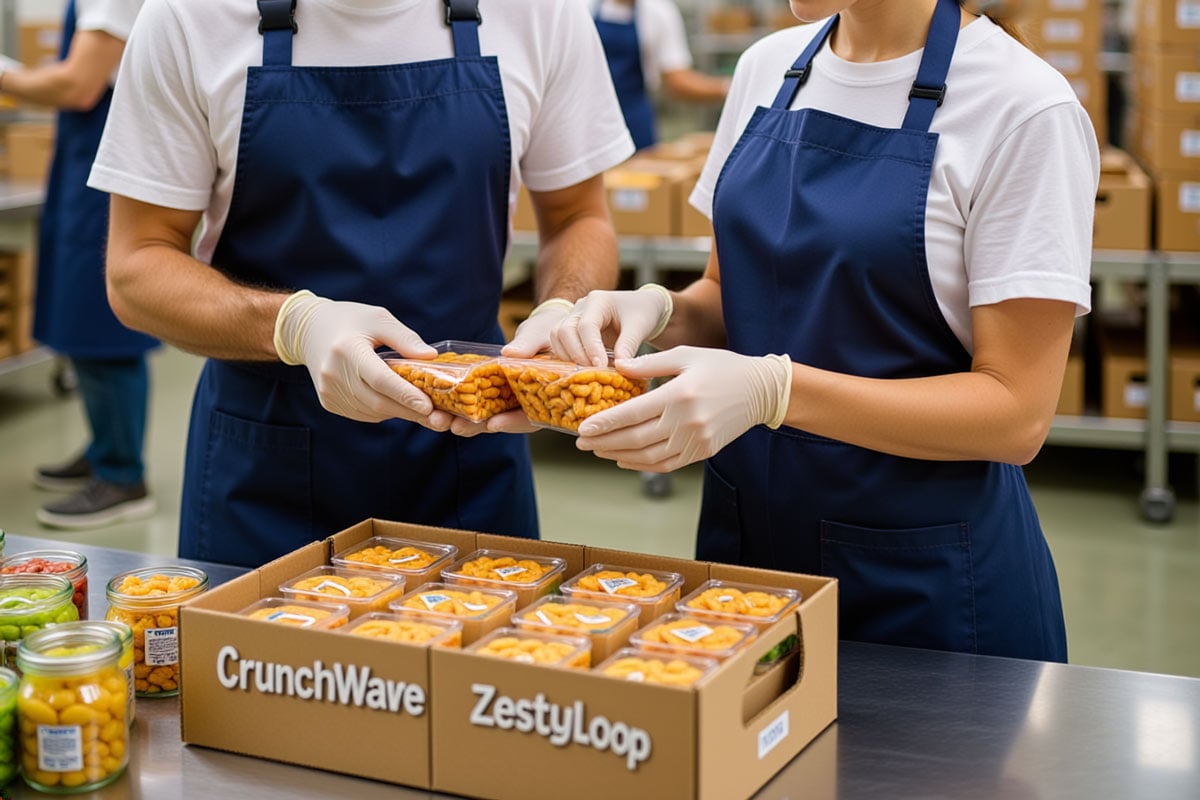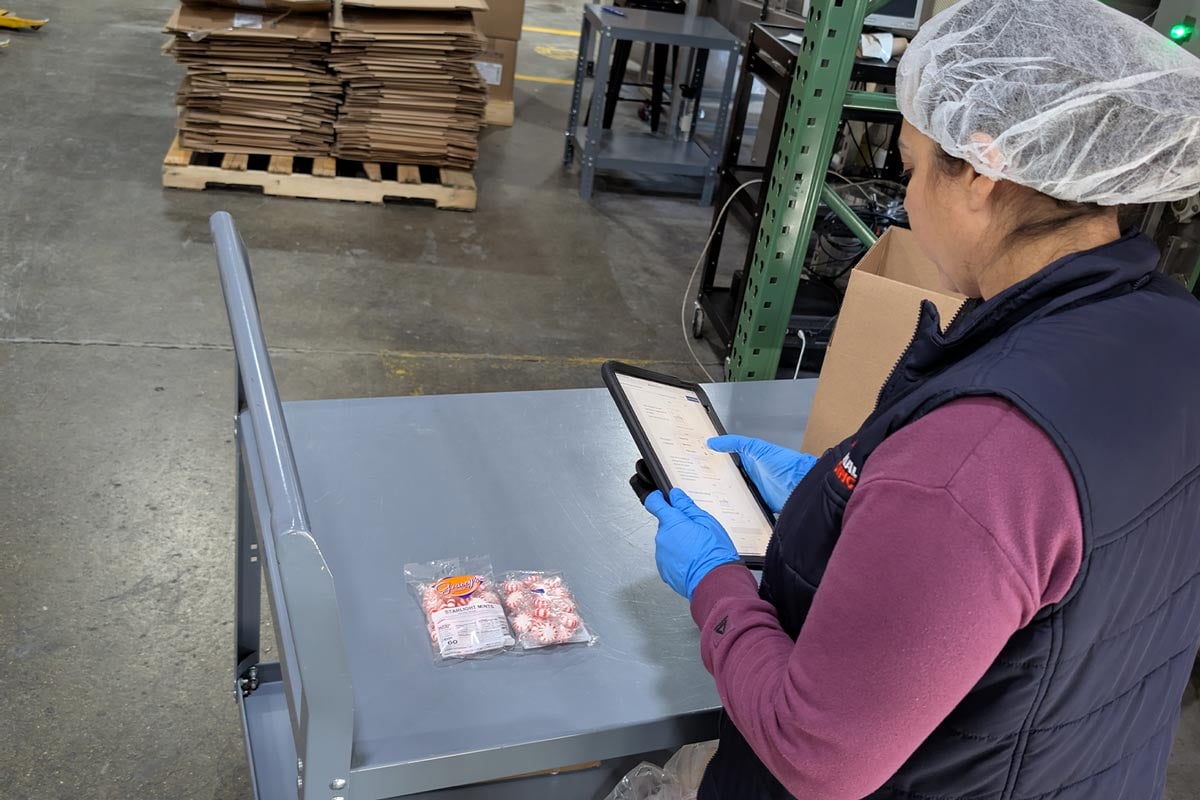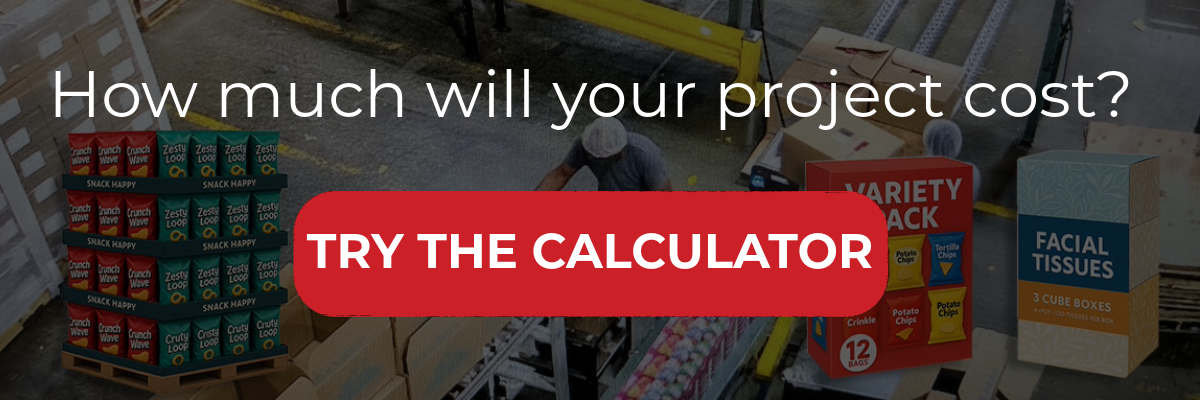How Much Does Contract Packaging Cost?
Supply Chain Services/ Contract Packaging | Multi-packs | Secondary Packaging | Cost Analysis | Contract Packaging
You're building a budget, evaluating a make-vs-buy decision, or trying to figure out if outsourcing that club pack program even makes sense. And every contract packager you talk to hides behind "it depends" or wants you to submit an RFP before they'll share real numbers.
That's not helpful. So here's what Industrial Packaging actually charges:
Multipacks and club packs run $0.75-$1.25 per unit. Kitting and assembly: $0.40-$0.60 per unit. Display builds: $30-$50 per unit. The full breakdown by service type is below, along with what drives those numbers up or down.
Whether you're comparing us to your current co-packer, weighing outsourcing against keeping it in-house, or just need real numbers for a forecast - here's what you need to know.
Our Contract Packaging Cost Calculator gives you a price range in 60 seconds. No email required to see the numbers.
"What does Industrial Packaging charge for secondary packaging?"
Here's our pricing for the most common services:
| Service | Price Range | Minimum Order |
|---|---|---|
| Multipacks / Bundling / Club Packs | $0.75 - $1.25 per unit | 100,000 units |
| Kitting & Assembly | $0.40 - $0.60 per unit | 10,000 units |
| Display Builds | $30 - $50 per unit | 100 units |
| Repacking & Rebagging | $0.20 - $0.40 per unit | 50,000 units |
| Bag-in-Box | $0.70 - $1.00 per unit | 50,000 units |
| Relabeling | $0.10 - $0.20 per unit | 10,000 units |
| Large Quantity Sampling | $0.10 - $0.20 per unit | 100,000 units |
| Pallet-Based Fulfillment | $10 - $15 per pallet | 12,500 units |
These are fully-loaded prices. No hidden setup fees, no surprise materials handling charges, no line items that appear on your invoice three months into the relationship.
We also offer 6-month price locks on approved programs. If materials costs fluctuate, we use index-based pricing so you can see exactly why and how pricing adjusts.

"What makes contract packaging cost more or less?"
Six factors determine where you land in those ranges:
Volume and consistency. A 500,000-unit run costs less per unit than a 100,000-unit run. Recurring programs with predictable forecasts get better rates than one-off projects because we can optimize the line for your specs. (There's a reason small projects cost more - it's math, not markup.)
Here's a real example: Company A runs their product for 5 days every other month. Company B runs the same product for 10 days every month. Company B gets better pricing - we can leave the line set up, the team stays sharp, and startup/shutdown inefficiencies disappear. Frequency and consistency matter as much as total volume.
Complexity. A simple 3-pack shrink bundle on automated equipment sits at the low end. A promotional kit with five hand-assembled components, custom inserts, and shrink wrap lands at the high end.
Compare: shrink-wrapping calendars (consistent size, high automation, few variables) vs. building a full pallet display with 6 shelves, 150+ items, and 10 different products (can't automate, space-intensive, labor-heavy). The calendar job might be $0.10/unit. The pallet display might be $75+. Same "contract packaging" - completely different work.
Quality requirements. Higher inspection frequency and more rigorous sampling add labor. If you need lot-by-lot documentation or specific defect rate guarantees, that pushes pricing up.
Materials handling. Glass bottles need different handling than flexible pouches. Fragile products, irregular shapes, or temperature-sensitive items require more care and time.
Turnaround. Standard is 10 business days after materials arrive. Rush projects may carry a premium depending on current capacity.
Compliance. Food-grade secondary packaging under standard SQF and FDA requirements is built into base pricing. Non-standard protocols or specialized documentation may add cost.
The factor you control most: program design. Consistent volumes, standardized configurations, and reasonable lead times deliver better pricing than sporadic orders with constantly changing specs.
"Should I outsource or keep it in-house?"
In-house packaging requires significant capital investment in equipment, plus ongoing costs for labor, maintenance, training, compliance infrastructure, and warehouse space. That makes sense when you're running consistent high-volume production of standardized configurations year-round.
Outsourcing makes sense when:
- Seasonal or promotional programs - You need capacity for three months, not twelve
- Test runs and new launches - Before you invest in dedicated equipment
- Overflow capacity - Your line handles base volume; we absorb spikes
- Non-core SKUs - Products that don't run frequently enough to justify dedicated equipment
- Complex low-volume configurations - Retail-specific displays, limited editions, custom work
This is especially true for snack food brands managing seasonal promotions, club store programs, and variety pack configurations that shift throughout the year.
With outsourcing, you pay per unit with no capital investment. Your cost structure becomes predictable and variable - scale up during promotions, scale down during slower quarters, without carrying fixed overhead.
You also get access to established compliance infrastructure. Industrial Packaging maintains SQF Level 2, FDA, AIB, SEDEX, Kosher, and Allergen Control certifications. You benefit from those systems without building them yourself. (Full details on our contract packaging services page.)
"What hidden fees should I watch for?"
Some co-packers quote attractive per-unit pricing, then add fees that weren't clear upfront. Ask about:
- Setup and changeover fees - Are they built into per-unit pricing or billed separately?
- Storage charges - What's the free storage period? How are overstay charges calculated?
- Materials handling - Is receiving and staging your inbound materials included?
- Minimum order charges - What happens if you run below stated minimums?
- Rush fees - What counts as rush and what's the premium?
- Enhanced QA - Is additional inspection beyond standard protocols extra?
Industrial Packaging uses fully-loaded pricing. The per-unit cost you're quoted includes standard quality inspections, materials handling, and normal turnaround times. No surprise line items.
"What should I actually expect working with you?"
Here's what we do that most co-packers don't:
We ask what metrics matter to YOU. Shipping accuracy? Print quality? Damage rates? We build reporting around your priorities, not a one-size-fits-all dashboard.
You hear about issues AND wins. Not just when something goes wrong. Proactive communication means you know what's happening with your project without having to chase us.
Hourly QA checks with photos. All inspections available online. You have visibility into quality, not just our word that we checked it.
Your GM is your first contact. Not a call center. Not a rotating account manager. A person who knows your business.
Standard turnaround: 10 business days. Ramp-up to full production: 2.5 weeks. We do what we say, when we say.
Our track record: 98.98% fill rate (2025 average). 1.47 complaints per million packages produced.

"Are you more expensive than other contract packagers?"
Our per-unit price might not be the lowest quote you receive. But per-unit price isn't total cost - and total cost is what actually hits your P&L.
Here's what we mean:
No hidden fees. Our pricing is fully loaded. Setup, materials handling, standard QA, normal turnaround - it's all in the number. You won't get invoiced for line items that weren't in the original quote. The co-packer who quotes $0.60/unit then adds setup fees, storage charges, and "expedite" premiums? That $0.60 was never real.
Fewer problems to manage. Our fill rate is 98.98%. Our complaint rate is 1.47 per million packages. That translates to fewer shorted orders, less rework, and fewer calls from your retail buyer asking why the club pack display showed up wrong. Problems have a cost - in chargebacks, in expedited freight to fix mistakes, in your team's time putting out fires.
Visibility without chasing. Hourly QA checks with photos available online. You see what's happening without sending emails or waiting for callbacks. If your current co-packer requires you to manage them like a second job, that's a cost too - it's just not on the invoice.
Tailored accountability. We ask what metrics matter to YOU - shipping accuracy, print quality, damage rates, whatever drives your business - and build reporting around your priorities. Not a generic dashboard. Your KPIs, tracked your way.
When you factor in hidden fees you didn't budget for, quality issues that trigger chargebacks, and hours spent managing a partner who should be managing themselves - the "cheapest" quote often isn't.
That said, if lowest per-unit cost is your only criterion and you're staffed to manage the tradeoffs, we may not be your best fit. We'd rather tell you that upfront than win business we can't serve well.
"How do I get pricing for my specific project?"
Two options:
Quick estimate: Use our Contract Packaging Cost Calculator to get a price range in 60 seconds.
Detailed quote: Share your project details and we'll provide formal pricing within 3-5 business days. Complex projects requiring line trials may take longer.
We'll give you a straight answer - even if that answer is "keep it in-house." If your volume is too low, the product requires capabilities we don't have, or in-house genuinely makes more sense for your situation, we'll tell you directly.
What's your current secondary packaging actually costing you - not just per unit, but in management attention, capital tied up in equipment, and warehouse space? That's the real question worth exploring.
Frequently Asked Questions
Q: What's the minimum order for contract packaging?
Minimums vary by service. Multipacks and club packs: 100,000 units. Kitting and relabeling: 10,000 units. Display builds: 100 units. Projects below minimums may be possible but carry higher per-unit costs.
Q: Are materials included in the pricing?
Your choice. We offer fully-loaded pricing including materials procurement (typically adds 5-10%), or you supply your own and pay labor only. Materials procurement simplifies your logistics; self-supplied gives you more control.
Q: How long does it take to get a quote?
3-5 business days after receiving complete project specs. You'll hear back within one business day to schedule a discovery call. Complex projects requiring line trials take longer.
Q: How long until production starts?
Typical ramp-up is 2.5 weeks to full production. Standard turnaround once running: 10 business days.
Q: What certifications do you have?
SQF Level 2, FDA, AIB International (Level of Excellence rating), SEDEX, Kosher, and Allergen Control Program.
Q: What if outsourcing doesn't make sense for my situation?
We'll tell you. If in-house is the better answer for your volume, product type, or situation, we'd rather build trust by being honest than close a deal that doesn't serve you.
Ready to See Your Numbers?
Every secondary packaging project is different - your volume, complexity, timeline, and quality requirements all affect the final cost. The ranges above give you a starting point, but the fastest way to get a real number is to run your specific scenario.
Want a quick ballpark? Try our contract packaging cost calculator - plug in your numbers and see where you land. No form required.
About Jarrod Dizazzo, President
Vice President at Industrial Packaging I believe that the strength of one is shown by looking at those around them. We've got a wonderful team in SCS and coming to work for IP is a joy every day. When not in the plant, you can find me fishing, hiking, or being goofy around the house with my 2 daughters and my wife.



